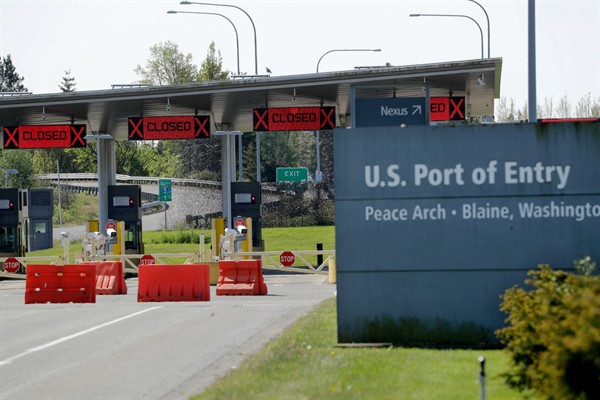Editor’s Note: Guest columnist Edward Alden is filling in for Kimberly Ann Elliott.
Along North America’s 49th parallel, where it meets the Pacific Ocean, a huge white stone arch stands on the border between the United States and Canada. Called the Peace Arch, it was built in 1921 to commemorate the resolution of boundary disputes that dated back to the War of 1812. Inside the arch, there is an iron gate attached to both walls, and an inscription that reads, “May these gates never be closed.”
Since March 21, in an effort to stop the spread of the coronavirus, the gates have been closed for the first time in the history of the two countries. The United States and Canada agreed to shut down the 5,525-mile border, the longest in the world, to all nonessential travel, a step that was not even taken following 9/11. While commercial traffic has continued to flow to avoid further economic harm, and some essential workers are still crossing, the usually long summer lines of cars filled with tourists, families and friends jamming the border in both directions have disappeared. Passenger vehicle traffic is down 99 percent from the previous year.

